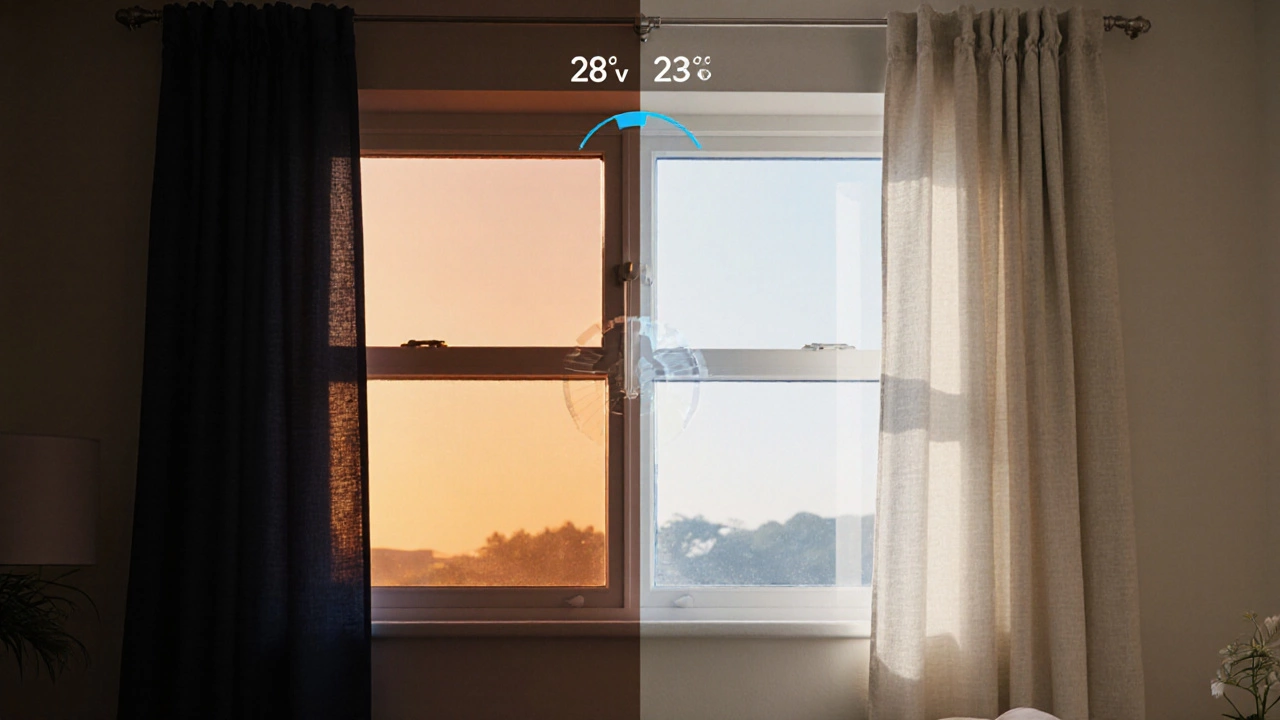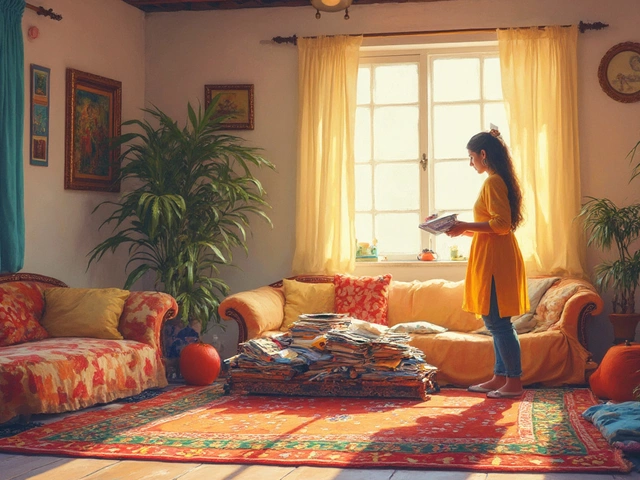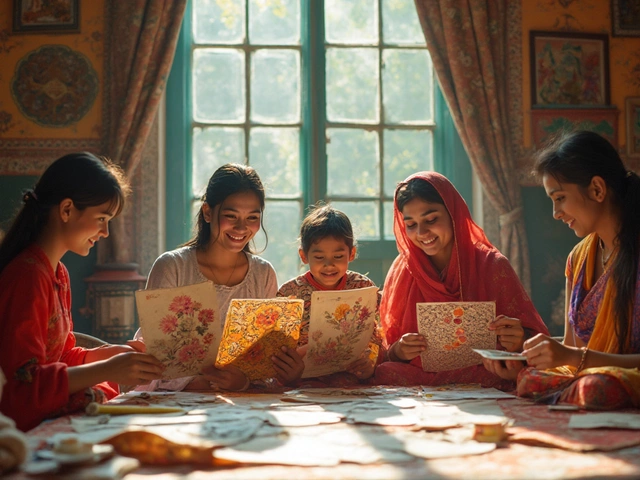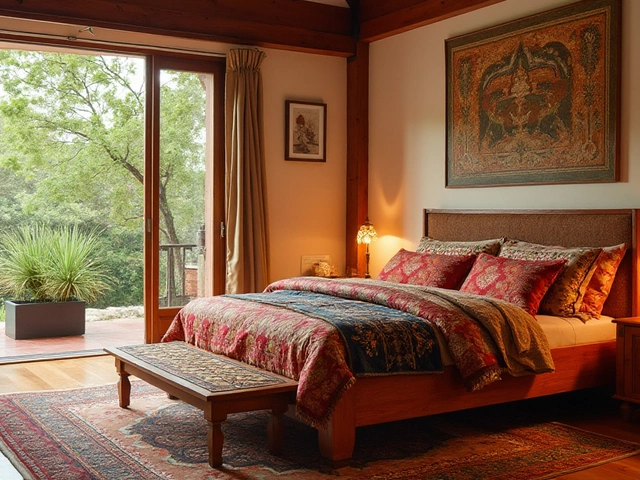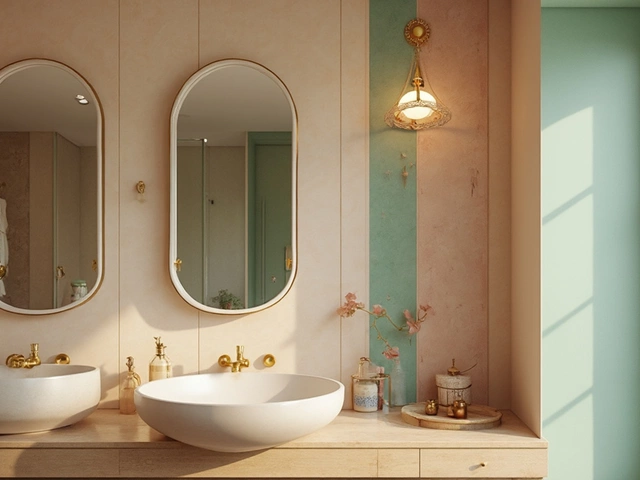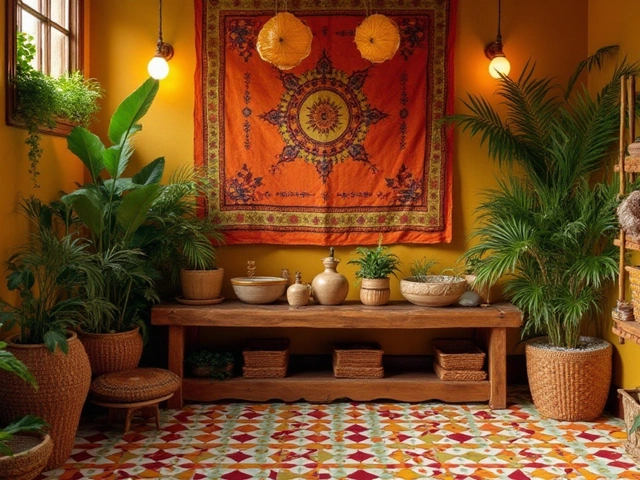Curtain Coolness Calculator
Choose Your Cooling Strategy
Select the color that best matches your cooling needs. Lighter colors with higher LRV (Light Reflectance Value) reflect more sunlight and keep rooms cooler.
Color Selection
Cooling Impact
Select a color to see cooling impact
Cooling Checklist
Follow these steps for maximum cooling:
- Choose colors with LRV ≥ 60
- Use fabric weight between 150-300 gsm
- Confirm fabric has UV-blocking finish
- Measure window orientation (east/west faces benefit most)
- Pair with external shading if possible
- Use light interior paint (LRV ≥ 70)
When the sun beats down on your windows, the whole house can feel like a sauna. Swapping out a heavy drape for the right shade can shave a few degrees off the indoor temperature without cranking the A/C. Below you’ll discover which hues do the most heavy lifting for a cooler space, how fabric choice amplifies the effect, and quick tricks to lock in the comfort.
How Curtain Color Influences Heat
Sunlight carries both visible light and infrared energy. Dark fabrics absorb that energy and re‑emit it as heat, while light shades bounce most of the light back out the window. The science behind it lives in two simple metrics: Light reflectance value (LRV) is a scale from 0 (pure black) to 100 (pure white) that measures how much visible light a surface reflects and Solar heat gain is the amount of solar energy that passes through a window and is absorbed by interior surfaces. The higher the LRV, the lower the solar heat gain, and the cooler the room stays.
Top Colors for a Cooler Room
Not every light color cools the same. Fabrics with a high LRV but low reflectivity in the infrared spectrum can still let heat in. Below is a quick comparison that shows the sweet spots for most Australian homes.
| Color | Typical LRV | Cooling impact | Best for |
|---|---|---|---|
| Off‑white / Cream | 80‑90 | Very high - reflects most visible light and a good chunk of infrared | Living rooms with large windows |
| Light Gray | 60‑70 | High - neutral tone, low heat absorption | Bedrooms where a softer look is preferred |
| Pale Blue | 55‑65 | High - cool visual vibe plus decent reflectance | Coastal‑style interiors |
| Soft Beige | 70‑80 | Very high - warm tone without heat penalty | Spaces that need a warm feel without temperature rise |
| Pastel Green | 65‑75 | High - natural hue, good reflectance | Eco‑focused rooms |
| Dark Navy / Charcoal | 15‑25 | Low - absorbs most sunlight, adds heat | Rooms with heavy shading or blackout needs |
From the table you can see that staying in the 60‑90 LRV band gives the biggest temperature drop. If you love rich colors, pair a dark accent with a light backing panel to keep the cooling benefit.
Fabric Choice Matters Too
Even the best color can lose its edge if the fabric is too thin or heavy. Two fabric traits dominate the cooling equation: Fabric weight is the density of the textile, usually expressed in grams per square meter (gsm) and Thermal insulation is the material’s ability to resist heat flow, often measured by its R‑value. Light, loosely‑woven fabrics (150‑250 gsm) let air circulate and heat escape. Heavier drapes (350‑500 gsm) trap warm air between the window and the room, negating the advantage of a light color.
Another often‑overlooked factor is UV protection is a treatment that blocks ultraviolet rays, preventing fading and reducing heat buildup. Fabrics with a UV‑blocking finish reflect up to 30 % more solar energy, which translates to a noticeable dip in indoor temperature during summer afternoons.
For a Sydney summer, a 250 gsm linen or a soft cotton blend in off‑white, paired with a UV‑blocking coating, strikes the perfect balance between airflow and solar rejection.
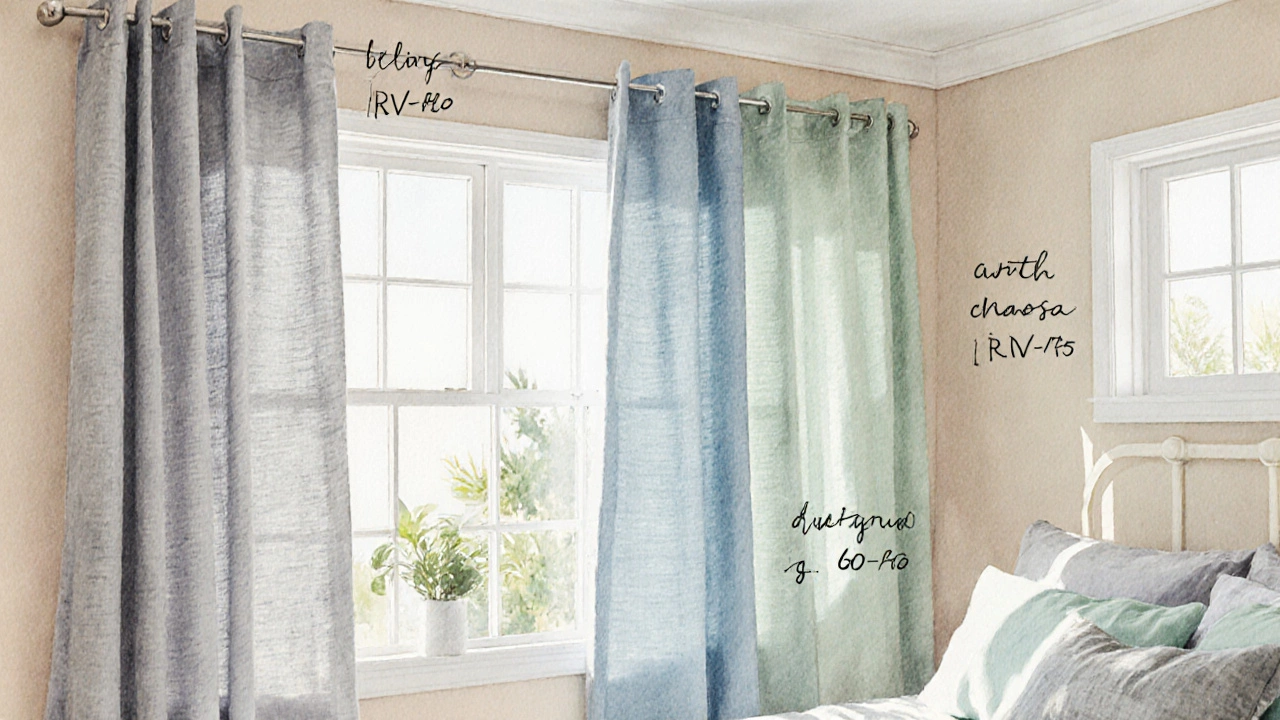
Pair Curtains with Other Cooling Strategies
Color and fabric are just the first line of defense. Here are three low‑cost allies you can add without a full renovation:
- External shading: Install awnings, pergolas, or external blinds to stop the sun before it hits the glass.
- Internal secondary layers: Add a sheer inner curtain that reflects light while the outer panel provides color‑based cooling.
- Window size and placement: Smaller windows or windows that avoid direct east‑west exposure naturally reduce Solar heat gain. If you can’t resize, consider low‑e glazing that cuts infrared transmission.
Even the paint on walls influences heat. Light‑tinted interior paint (LRV 70‑80) works hand‑in‑hand with light curtains to bounce stray sunlight around the room rather than locking it in.
Common Mistakes to Dodge
- Choosing a dark shade for a sun‑flooded space - you’ll feel a sauna, not a sanctuary.
- Buying heavyweight blackout curtains for a modest balcony room - the added mass traps heat instead of letting it out.
- Skipping UV treatment on fabrics that sit in direct sunlight - fading and hidden heat buildup become a problem quickly.
- Relying solely on curtains while ignoring external shading - a bright window can overwhelm even the lightest drape.
- Matching curtains to dark furniture without considering LRV - the room can end up looking heavy and warm.
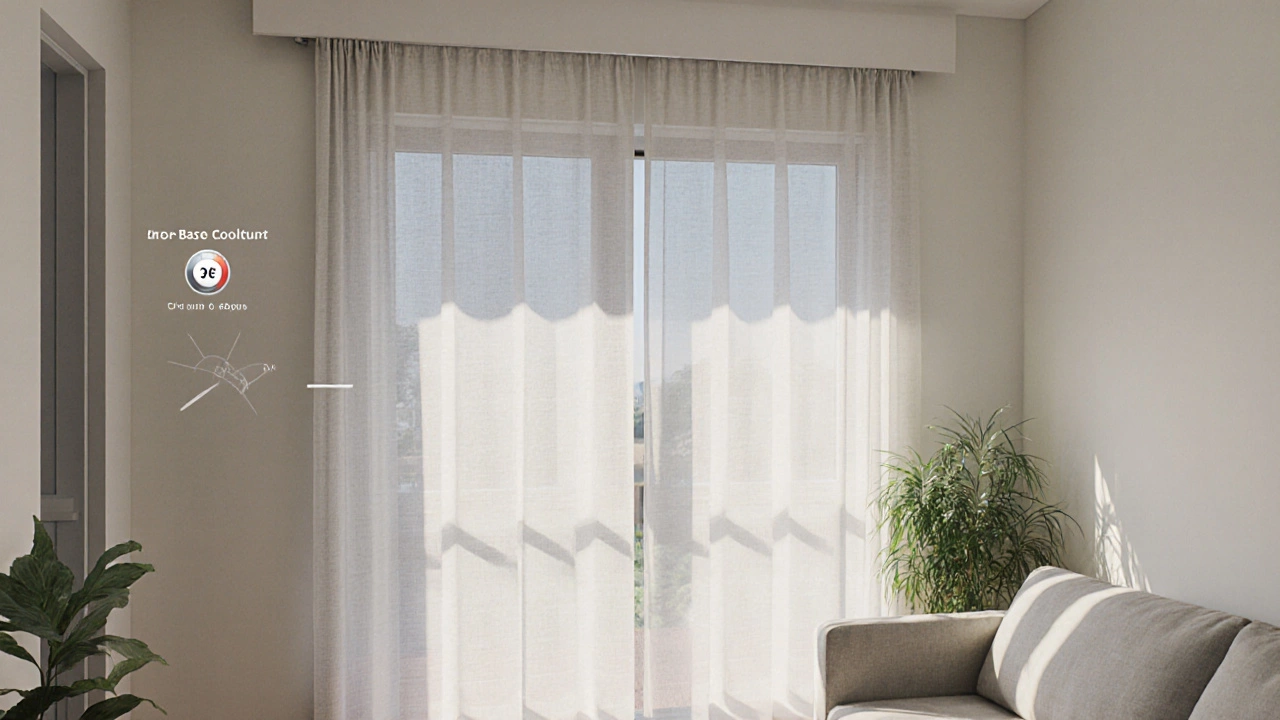
Quick Checklist for Cool Curtain Selection
- Pick a color with LRV ≥ 60 (off‑white, light gray, pale blue, soft beige, pastel green).
- Choose fabric weight between 150‑300 gsm for airflow.
- Confirm the fabric has a UV‑blocking finish (look for “UV‑protected” or “sun‑shield”).
- Measure window orientation - east and west faces benefit most from light colors.
- Pair with external shading (awnings, blinds) if possible.
- Use a light interior paint (LRV ≥ 70) on walls surrounding the window.
Following this list can drop indoor temperatures by 2 - 5 °C, meaning you’ll rely less on your air‑conditioner and keep energy bills in check.
Wrap‑up
Choosing the right hue isn’t just about style; it’s a practical tool for a cooler home. Light, high‑LRV colors paired with breathable, UV‑protected fabrics create a passive cooling system that works day after day. When you combine them with smart shading and neutral wall tones, you get a comfortable, energy‑savvy interior without sacrificing design.
Do dark curtains ever help with cooling?
Dark curtains excel at blocking light, but they absorb heat. In a hot climate they usually raise the room temperature unless you pair them with heavy external shading or use them only in rooms that stay shaded all day.
Can I use patterned curtains and still keep the room cool?
Yes, as long as the base color of the pattern falls in the high‑LRV range. A subtle white‑on‑light‑gray pattern behaves the same as a solid light gray curtain.
How much can curtain color really lower the temperature?
Studies in Australian homes show a drop of 2‑5 °C when swapping a dark, heavy drape for a light, breathable, UV‑protected curtain in a sun‑exposed room.
Is a higher LRV always better?
Higher LRV means more reflected light, which generally reduces heat. However, if the fabric is overly thin, you may lose privacy. Balance LRV with opacity needs.
Should I replace existing curtains or just add a new layer?
Adding a light, reflective inner layer behind your current drapes can achieve a cooling boost without a full replacement. Just ensure the inner fabric is UV‑protected.
